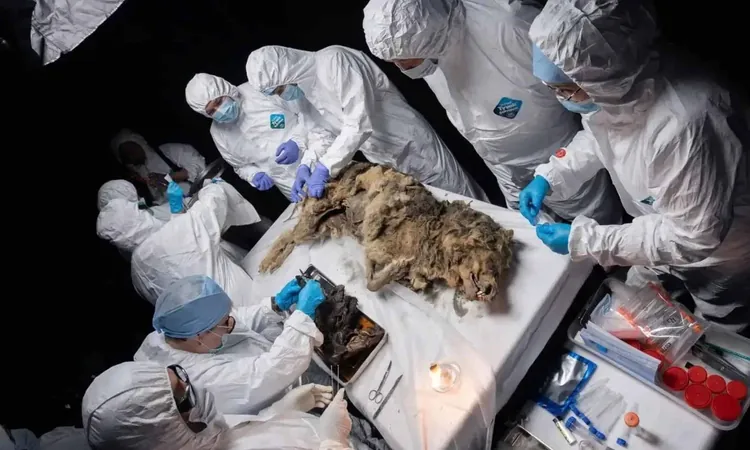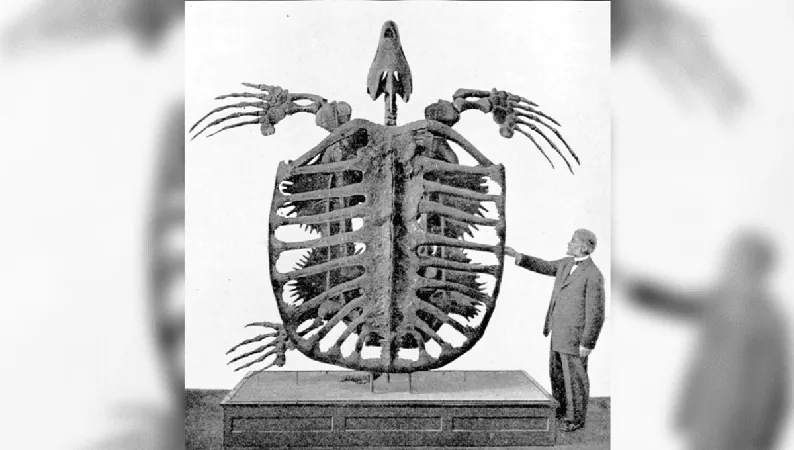
Breathtaking Discovery: Ice Age Wolf Resurfaces After 44,000 Years
2025-09-09
Author: Jessica Wong
In the heart of Siberia, a remarkable find has re-emerged from the icy depths of history. In 2021, local residents stumbled upon a perfectly preserved Ice Age wolf, encased in ice along a riverbank, capturing the imaginations of researchers and history buffs alike.
What sets this discovery apart is the wolf's astonishing state of preservation; unlike typical fossil finds, this specimen boasts intact skin, fur, and even internal organs—an exceptional rarity in the world of paleontology.
Preliminary studies indicate that this wolf lived approximately 44,000 years ago during the late Pleistocene epoch. Fast forward to June 2024, where scientists in Yakutsk conducted a groundbreaking necropsy to glean invaluable insights into Ice Age predators and the ecosystems they inhabited.
Unveiling the First Intact Ice Age Predator
Albert Protopopov, a key figure from the Academy of Sciences of Yakutia, emphasized the significance of this discovery. "This is the world's first finding of a late Pleistocene predator," he declared, marking a pivotal moment in the study of Ice Age fauna. Typically, bones or fragments of herbivores are found, with carnivores being an extreme rarity.
The research team meticulously sampled the wolf's stomach, intestines, and soft tissues to reconstruct its diet and examine any surviving microorganisms. This analysis aims to provide a clearer picture of the ancient wolf's life, feeding habits, and ecological relationships.
The Secrets of the Frozen Ground
The icy conditions essentially freeze time, halting the decay process. Not only does the cold preserve the wolf’s remains, but natural dehydration eliminates moisture from soft tissues, significantly slowing microbial breakdown and even preserving DNA.
The permafrost environment plays a dual role, limiting oxygen and liquid water—critical conditions for bacterial growth—allowing such pristine specimens to endure for tens of thousands of years.
Decoding the Life of an Ice Age Wolf
Through a detailed necropsy, scientists can piece together the animal’s life history. By comparing isotopes from its muscles and bones against known prey, they can outline its hunting territory and dietary preferences.
Artyom Nedoluzhko, a leading paleogeneticist, highlights the significance of understanding this predator’s ecological niche and how it correlates with wolves from the same era across northeastern Eurasia.
A Peek into Ancient Pathogens
One of the most intriguing aspects of this research involves screening for ancient pathogens that might linger in the gut and organs. Recent studies have astonishingly revived various ancient viruses from the permafrost, emphasizing the potential dangers that warming climates may unearth.
Linking the Past to the Present
Genetic analysis will play a crucial role in defining this wolf's evolutionary lineage. By comparing its DNA with samples from modern and ancient wolves, scientists hope to map out its place on the family tree and trace the development of key traits over the millennia.
This discovery not only enriches our understanding of Ice Age ecosystems but also highlights the stark gaps in our knowledge regarding carnivorous species from that time, as most finds tend to be incomplete herbivore remains.
The Future of Research on This Ice Age Wonder
As research progresses, the wolf’s genomic data will be cross-referenced with regional prey archives, offering insight into its hunting patterns, possible scavenging behaviors, and adaptations to its environment.
These studies will also inform discussions on the evolving landscape of disease as climate change threatens to resurface ancient pathogens, necessitating heightened biosecurity awareness in thawing Arctic regions.





 Brasil (PT)
Brasil (PT)
 Canada (EN)
Canada (EN)
 Chile (ES)
Chile (ES)
 Česko (CS)
Česko (CS)
 대한민국 (KO)
대한민국 (KO)
 España (ES)
España (ES)
 France (FR)
France (FR)
 Hong Kong (EN)
Hong Kong (EN)
 Italia (IT)
Italia (IT)
 日本 (JA)
日本 (JA)
 Magyarország (HU)
Magyarország (HU)
 Norge (NO)
Norge (NO)
 Polska (PL)
Polska (PL)
 Schweiz (DE)
Schweiz (DE)
 Singapore (EN)
Singapore (EN)
 Sverige (SV)
Sverige (SV)
 Suomi (FI)
Suomi (FI)
 Türkiye (TR)
Türkiye (TR)
 الإمارات العربية المتحدة (AR)
الإمارات العربية المتحدة (AR)